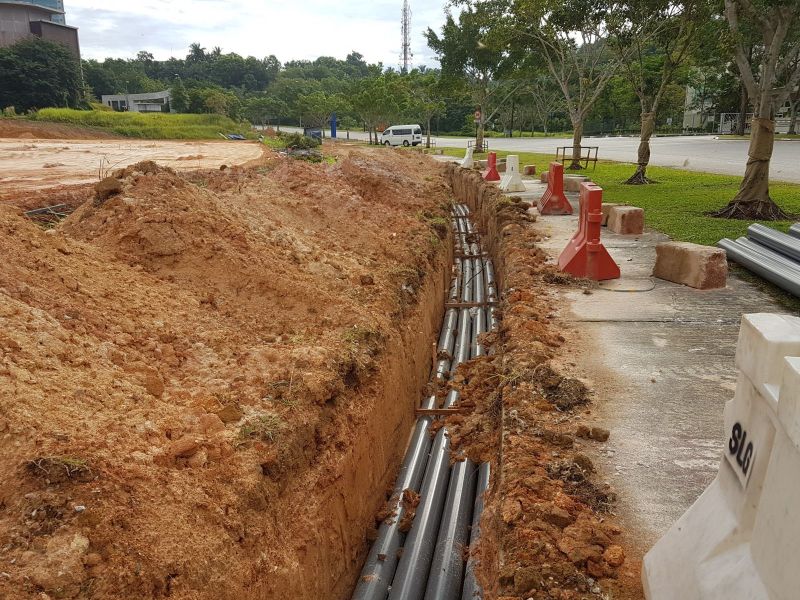Underground utilities are critical components of modern infrastructure that provide essential services to communities. They include water and sewer lines, electrical and communication cables, gas pipelines, and more. In this article, we will discuss the importance of underground utilities, the different types of utilities, and the maintenance required to keep them running efficiently.
Importance of Underground Utilities
Underground utilities are essential because they provide the necessary infrastructure to support residential, commercial, and industrial development. Without these services, communities would not be able to function efficiently.
For example, water and sewer lines provide clean water for drinking, cooking, and sanitation. Electrical and communication cables power homes, businesses, and public services, while gas pipelines supply natural gas for heating and cooking.
In addition to providing essential services, underground utilities are also important for safety reasons. They are less susceptible to damage from natural disasters such as hurricanes, tornadoes, and floods, which can disrupt above-ground infrastructure and leave communities without necessary services.
Types of Underground Utilities
There are several types of underground utilities, each with its own unique purpose and function. Some of the most common types include:
- Water and Sewer Lines - These utilities provide clean water for drinking, cooking, and sanitation, as well as a means for the disposal of wastewater.
- Electrical Cables - These utilities transmit electrical power to homes, businesses, and public services.
- Communication Cables - These utilities transmit voice, data, and video signals for telephones, internet, and television services.
- Gas Pipelines - These utilities supply natural gas for heating and cooking.
- Storm Drains - These utilities collect and carry rainwater away from streets and buildings, preventing flooding and erosion.
Maintenance of Underground Utilities
Proper maintenance of underground utilities is critical to ensure their continued functionality and safety. Here are some maintenance strategies that can help prolong the life of underground utilities:
- Regular Inspections - Regular inspections can identify potential issues before they become major problems. Inspections can be done using CCTV cameras, smoke testing, and other methods.
- Cleaning - Regular cleaning of sewer lines can prevent blockages and keep the lines flowing efficiently. High-pressure water jetting is an effective method for cleaning sewer lines.
- Repairs and Replacements - When a problem is identified, prompt repairs or replacements are necessary to prevent further damage and restore functionality.
- Corrosion Protection - Underground utilities are susceptible to corrosion, which can cause leaks and failures. Applying protective coatings or installing cathodic protection systems can prevent corrosion and extend the life of the utilities.
- Tree and Vegetation Control - Trees and vegetation can cause damage to underground utilities by growing into the pipes or causing shifts in the ground. Regular tree trimming and vegetation control can prevent damage to underground utilities.
Challenges in Maintaining Underground Utilities
Maintaining underground utilities can be challenging due to several factors. One of the primary challenges is the difficulty of accessing underground utilities. They are often buried deep beneath the ground, making it difficult to reach them for inspections, repairs, and replacements.
Additionally, underground utilities are often located in areas with high foot or vehicle traffic, making it challenging to perform maintenance without disrupting normal activities.
Another challenge in maintaining underground utilities is the coordination required among different utility providers. Often, multiple utility providers have lines and cables running in the same area, which can make it difficult to perform maintenance without disrupting the services provided by other utilities.
Underground utilities are critical components of modern infrastructure that provide essential services to communities. They are less susceptible to damage from natural disasters and provide a safer alternative to above-ground infrastructure.
Proper maintenance of underground utilities is critical to ensure their continued functionality and safety. Regular inspections, cleaning, repairs and replacements, corrosion protection, and tree and vegetation control are essential strategies for maintaining underground utilities.
While maintaining underground utilities can be challenging, it is crucial for ensuring the longevity and safety of these essential components. By staying proactive and implementing a maintenance plan, communities can continue to rely on these services and avoid costly repairs and disruptions to daily life.
It is also essential for utility providers to work together and coordinate their maintenance efforts to ensure minimal disruptions to services. By collaborating and communicating effectively, they can ensure that all underground utilities are maintained efficiently and effectively.
Underground utilities are an essential part of modern infrastructure that provide vital services to communities. Proper maintenance is critical to ensure their continued functionality and safety, and it requires regular inspections, cleaning, repairs and replacements, corrosion protection, and tree and vegetation control. While maintaining underground utilities can be challenging, it is necessary to avoid costly repairs and disruptions to daily life.
